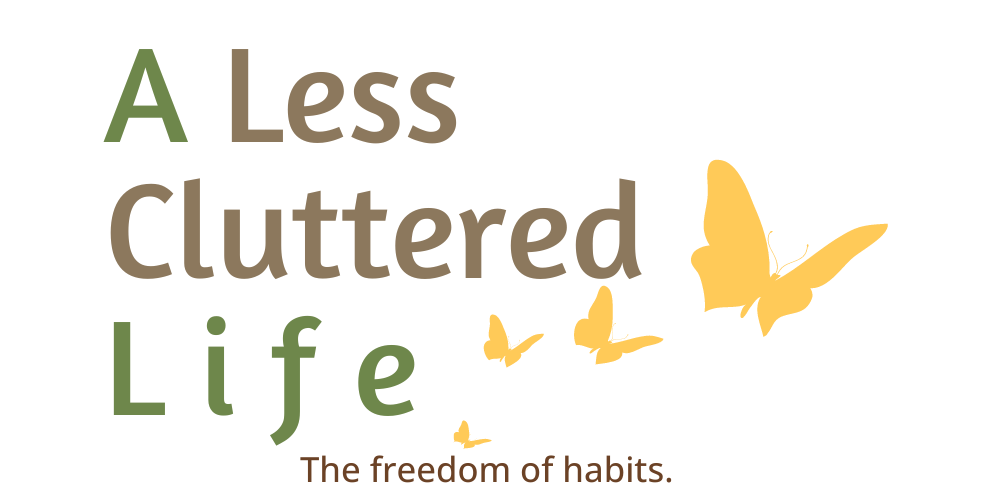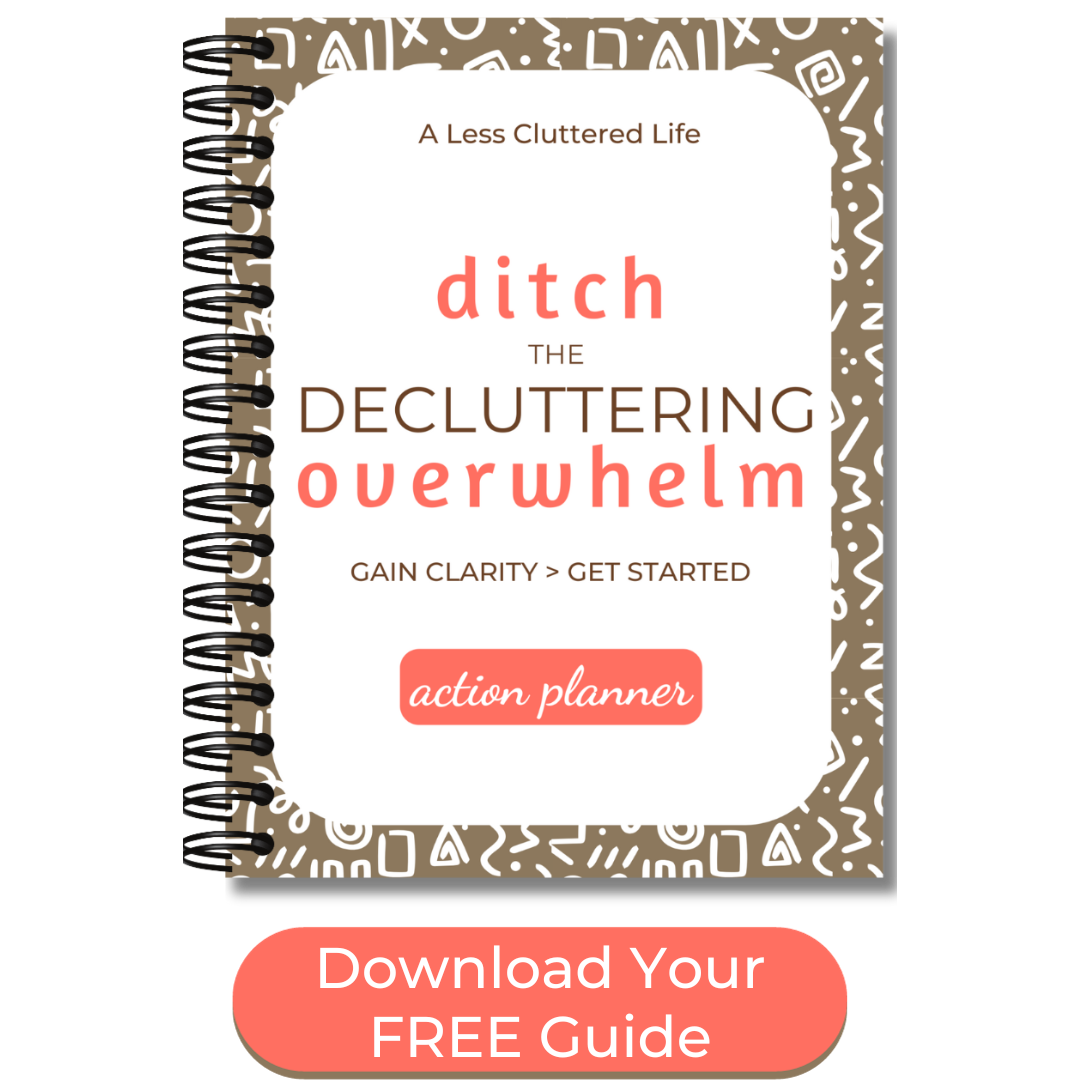|
When you’re decluttering, there’s a lot of options for getting things out of your home. Not every option will be right for you or the things that you’re letting go of. However, knowing what you can do with the items you’re decluttering from your home can make it easier to get them out of your house. by Susan McCarthy In a decluttering class I was teaching, I was asked the inevitable question, “What if I get rid of something that I later need?” I mentioned The Minimalists 20/20 Rule. It states that if you are debating getting rid of something, consider if it could be replaced for under twenty dollars and in less than twenty minutes. There was some pushback. Isn’t it wasteful to get rid of something only to replace it later on? Consider the last time you used the item. If it’s been a few years, how would circumstances change so to require using that item again? A woman chimed in with the story about how she decluttered a bunch of things from her home and put the boxes in the basement. When a health professional recommended drinking an herbal infusion, to make in a pitcher, the woman rooted through the boxes in her basement and found the pitcher she knew she nearly got rid of. When I asked her how long these boxes of “decluttered” items had been in the basement, the answer was five or six years. Unease furrowed her brow. The savviness she’d felt in reclaiming this one item slipped away as she realized that she’d been holding onto boxes of stuff that she’d decided she didn’t want. She hadn’t decluttered the items from her home. Decluttering Doesn’t Count as Decluttering Until Things Leave Your HouseLet’s be clear…putting the stuff you no longer want in bags and boxes, and then moving said bags and boxes to your garage, basement, or other storage space is NOT decluttering. Because these things haven’t left your home, all you’ve done is rearrange stuff. (And off-site storage doesn’t count either because these things are still in your possession.) I can hear you protesting that you will get rid of these things, once you figure out the best way to do so. Nope. You haven’t decluttered anything. I’ve spoken with people who have the stuff they “decluttered” a decade ago still piled in their basement. Or they have unopened boxes from their last move…eighteen years ago. Stuff that goes into boxes…and that stays in those boxes…is unnecessary for your life. And chances are that if you aren’t interested in displaying knickknacks and collectibles then some part of you has acknowledged that you don’t like these things. Or these things are a tinderbox of negative emotions that do not bring love or joy into your life. Consider How You’ll Get Rid of Things Before You DeclutterIn The Roadmap to a Less Cluttered Home Life, choosing what you’ll do with decluttered items is the step before you actually begin to clear through the items in your home. While you don’t need to know every detail, it can be helpful to have some loose plans in place. Why?
Letting Go of StuffYou may be decluttering your stuff. Or you may be clearing out the estate of a parent, family member, or friend. There’s definitely an emotional component to decluttering. While packing stuff in boxes that you store in your home or in off-site storage is an option, consider…
While I always knew that my parents kept everything, I never quite understood just what they were keeping until I emptied their house. For example, I knew that when my father purchased a new toaster that he’d hold onto the old, broken one just in case the new one didn’t work. But I didn’t expect to find a half dozen broken toasters in the attic. And there was the broken kids’ badminton game…the rackets held together with tape, holes in the net fixed into knotty lumps…that my mother had insisted I hold onto. For the grandchildren. That she didn’t have and was unlikely to have. At the time of the badminton argument, I didn’t know whether to be frustrated that she insisted on keeping what belonged in trash…or indignant that she’d give her grandchildren broken toys. (This also made me realize that I needed to stop offering to help my parents organize the home since neither of them wanted to get rid of anything.) Uncovering wedding gifts to my parents (that hadn’t been used in decades, if ever); potential family heirlooms (that neither my brother nor I knew about); and everyday items kept in excess, changed my perspective on the rules I’d inherited about keeping stuff for “someday.” Even though I’d begun decluttering my stuff before emptying my parents’ house which led to having a yard sale, making private sales, donating items, gifting items, and filling four 30-yard dumpsters with their stuff, I started taking a closer look my personal possessions. Decluttering isn’t easy. However, if you’re reading about decluttering and organizing, chances are you aren’t happy with the disorganized state of your home. Bins, shelves, drawer organizers, and hand lettered labels won’t help you store more stuff than you have space for. Also, wouldn’t it be nice to know that someone can use the things that you’d just keep in boxes? What to Do with Items You DeclutterDon’t expect to find a one-size fits all solution to getting rid of items. Donating to a large charity that takes nearly everything may be the closest you get. Try to avoid the overwhelming idea that you need to find the perfect location or person for everything. Remember, the best way to get things to the people who can use them is to get the items out of your house. Repurpose Items You Like but Don’t UseOkay, repurposing an item doesn’t get it out of your house, but it does remove it from the area where you’ve been storing it. Do you have items that you’d like to keep but you just don’t use? Consider if you could give the item another use. For example, my husband gave me a Laurel Burch mug shaped like a cat head. I found it awkward to drink coffee from (the ears bumped into my glasses). But the mug was cute. I use it to group together my crochet hooks. Instead of rooting around in a bag for a hook, they are displayed in the mug which sits on the end table near where I crochet. I also use old purses to organize the supplies for small crochet projects. If you go to a party and bring food, instead of using a disposable serving piece, use a plate, casserole dish, or serving dish that you don’t want back. Encourage the host to pass along the item if they want. Don’t try and do this with everything, just the items you want to keep but you don’t use as the item is intended. And, really, don’t hold onto things because you might find a use for it someday. Only repurpose items if they help solve a current organizing problem. Clean and Organize with the Things You OwnBefore you toss clothing items that are too torn, stained, faded, etc. to be worn, donate them to the local charity. While they won’t sell these items to be worn, they will sell them to companies that buy fabric as rags that are then repurposed. Of course, you can tear up old tee shirts for cleaning rags too. However, don’t go crazy, it’s unlikely that you need a huge bin of cleaning rags (because they can be washed and reused). You can also look around your home for items that can be repurposed as organizing tools. Put pens in a pretty mug or vase. Use boxes or baskets to straighten small items in drawers or on shelves. Instead of spending money on organizing supplies, use those things that you already own. Gift Items to Friends and FamilyWhen passing along items to those close to you, be careful not to pressure or guilt someone into taking something! Consider…if you were out shopping and saw this item would you spend money on it to give it to the person you’re thinking of? Would they appreciate this gift? And remember, to gift the item to another person means that it is now theirs to do with as they wish. Don’t look for the item in their home or ask them if they’ve used or displayed it. If they choose to get rid of the item, that’s their right because the item now belongs to them. So don’t stipulate that if they decide they no longer want the item at some point that they should then give it back to you. I gave an etched glass bowl with an iris design that I’d found in my parents’ attic to a friend on her birthday. It turned out that irises were her favorite flower. Big win. But, in retrospect, other items that I gifted to friends felt a bit more like I’d foisted the things onto an unsuspecting new owner. I’ve even read of stories of couples who are downsizing and who set up a gift table of holiday decorations at their Christmas party and then encourage guests to select an item to take home. And if you are of an age where you are thinking about who you’d like to inherit certain items, consider if you can pass these along to the recipients now. This would eliminate future arguments and relatives who choose to act poorly because they see a payday or believe that they would be the better person to take ownership of an item. And you get to see someone enjoy the item. Host a Swap PartyHosting a themed swap party is a great way for you and friends to get rid of things you no longer want while also getting new-to-you items. You can select almost anything for a swap party…just be certain to invite folks who own the item and are interested in getting rid of some of the items that they have. (If you belong to an interest-based or hobby group, a swap party could be the theme for a meeting.) Ideas for a swap party…clothing, shoes, fashion accessories, books, craft supplies, holiday décor, and so on. Stick with one type or category of items so things don’t become too chaotic. Be clear and firm about what people can bring to the party. The idea isn’t to turn this event into anyone’s dumping ground for all the things they want to get rid of. You’ll need space for everyone to display what they have. Also decide what will happen to the items that aren’t chosen. Will everyone be expected to take home their stuff? (Don’t be surprised if some people don’t remember what they brought.) Will you or someone else bring the unwanted items to the local donation center? What if someone offers to take leftover items that they’ll sell for their own profit? Keep it simple but be clear about the rules up front before anyone walks in your door. Donate ItemsDonating items to charity is no longer limited to giving your things to a large organization. There are smaller organizations that focus on a narrow group of items…eveningwear for girls going to prom, empty pill bottles, old cellphones, etc. However, if you have a house full of stuff and you’re just beginning the decluttering process, I’d recommend choosing an organization that will take as many of the items as possible that you’re getting rid of. You don’t want to become mired in making too many decisions at the beginning of the decluttering process…keep or donate this; keep or donate that? Donate here or there or that other place? If you force yourself to make too many decisions, you may end up with decision fatigue. You don’t want it to be easier to hold onto something just so you don’t have to decide what to do with it. Also, if you have to ship or deliver items to a small charity, consider if that expense of money and time is worth the support you want to show to that group. I’m not suggesting that it isn’t worthwhile to donate to small charities but if it’s difficult to get things to the group, you risk procrastinating. Particularly at the beginning of the decluttering process, you want to see things leaving your home, so you feel as if something’s getting accomplished. If you have boxes piled up in a room, near your front door, or in your garage, you aren’t going to feel as if you’re making progress. You don’t want to feel discouraged. Sell OnlineSelling items online includes, but is hardly limited to eBay, Etsy, Replacements, Craigslist, and Facebook Marketplace. Ask around to find out what apps the people you know have used (and what types of items they sold). And although you may think that people would only recommend apps that they enjoyed using and had success with, make a point in asking if they had a positive experience. I’ve had people make recommendations and when I later told them about my poor experience, they’d then tell me about their horrible experience! You’ll need to be organized to sell items. You don’t want to accidentally give away something that’s posted for sale…and sells. Nor do you want to risk misplacing an item for sale. You’ll need a centralized location for items that you have put up for sale. You may also want to label items with where you’re selling them, the start and end date of the sale, and even the title of the sale (particularly if you have similar items that you don’t want to confuse). And to clear items from your home even faster, sell items in lots. For example, a group of books by the same author or on the same topic, a week of seasonal outfits for a child that are in the same size and coordinating colors, a box of unused craft supplies, and so on. Make it clear to potential buyers that you won’t break up the group. Pay attention to details like adding shipping costs (you’ll need to weigh the item in a box with appropriate packing materials); the percentage of the sale price that will be taken by the site; and if the site automatically lowers the price every so many days. So, consider where it ceases to be worth your while to sell something that you need to photograph, write descriptions, post and track online, communicate with potential customers, and pack and ship the item. If this sound like you’ll be running a business, you will be. Is that what you want to do while dealing with your everyday life, work, family, and decluttering? If you want to sell things without doing this work, look for someone in your area who has a business selling items for others. Wondering if it’s worth selling an item or if you should donate it? Use https://goodwillnne.org/donate/donation-value-guide/ to discover the donation value of the item (even if you don’t give it to Goodwill). Support a Fundraising EventIf you happen to see that a local school or nonprofit is holding some sort of fundraiser for which they are seeking donations of items to sell at a yard sale or to auction or raffle off, look around your home for those new or like new items that you haven’t managed to get rid of. You’ll be able to support your community while letting go of items that others can choose to own. Don’t hold onto items for this purpose…remember, if the item isn’t leaving your home, you haven’t decluttered it. Yes, you’re relying on serendipitous moments of having something that you can donate to the fundraiser. Hearing about a fundraiser can actually prompt you to declutter. Pay attention to the description of the type of items that will be accepted. Hire an Auction House or an Estate Sale CompanyI don’t have experience working with auction houses and company’s running estate sales, so I can’t offer many insights here. But know that these aren’t options that are limited to emptying out a deceased person’s house. Auction houses often look for things that are…
Look for nearby locations to find out how they work. How and when do they work? What actions will you have to take? Some estate clearing businesses may haul items from the house for free in exchange for the right to keep all profits from the items they sell. They may send someone to your home to decide if the items are worth their time dealing with. It’s their business and they know their clientele and what things price will sell for. If you don’t think a business will get you the type of money you expect to earn, contact another estate sale business or auction house. If they pressure you into working with them, insisting that they are your only or best option, step back. Hold a Yard SaleHolding a yard sale does mean that you’ll need to collect and store items at your home…they won’t be leaving. To avoid feeling as it you aren’t making progress, set a date for your yard sale in the near future and use that upcoming date as an incentive to declutter your home. Depending upon where you live, you may be limited to the number of yard sales you can have a year so you don’t appear to be running a business from your home (although if the weather is bad, they may let you switch to the next weekend). You’ll definitely need help setting up and monitoring the tables. If you can encourage your neighbors to hold yard sales as well you may draw in even more traffic. Have a plan for anything that doesn’t sell. Will you load your car and bring the things to the local donation center that afternoon? Or will you set things out on the lawn with a FREE sign? (Just don’t leave your tables with these items because I’ve heard more than one story of people’s folding tables being counted as free items as well. Sell in a Local Consignment ShopSome shops may buy your items outright while others will pay you a percentage of what the item sells for. These are independent shops and if the owner has been in business for a while, they know what will sell and what won’t. No matter the condition of the item, if the owner doesn’t think it will meet their clientele’s expectations and sell, they’ll turn down the item. If you have items on consignment at multiple shops, you’ll want to keep track of what is where. Also pay attention to how long the shop will keep the item and what they will do with items that don’t sell. If you want unsold items back, put a reminder in your calendar to pick up the items. You should also get in writing (or more likely nowadays, a digital printout of what they are taking). Note if they automatically reduce the price of items to get them to sell. If you get, say fifty percent, of the final sale price, will you be pleased by the amount you get? Find out if you can reclaim items before the price is marked down. Gift to Specific OrganizationsThis option can require some creative thinking. For example, could you donate children’s books to a school? (A new teacher might be thrilled to get books for her classroom library.) Books for adults might be accepted by a senior center…and it your library holds book sales; they’ll be thrilled to get books in good condition that don’t smell of mildew. When I taught kids’ art classes for an environmental nonprofit, I frequently got bags filled with supplies when crafters thinned out their stash. A school, camp, senior center, or nursing home might also be thrilled to get craft supplies. Vintage home items and clothing might be of interest to school, college, and community theater groups. Do you have family heirlooms that could go on display at a town’s historical society…or get donated to a small, highly specialized museum? Don’t exhaust yourself using this technique for individual items…look for places that will accept boxes of books or craft supplies or whatever else you’d like to gift. Oh, and just don’t drop off the items. Call ahead of time to find out if they can and will accept these things. Neighborhood Listservs and Local GroupsYou can also get rid of things to individuals who live in your community. Instead of posting flyers of what you have, you list items online through sites like Nextdoor, BuyNothing, Freecycle, and groups on Facebook dedicated to members of your town or area. This can take some time as after posting an item you’ll need to interact online with interested individuals. Also establish a policy for how long you’ll hold onto something if it doesn’t get picked up (give the person days, not a week). Your goal is to declutter items from your house…you don’t have to get caught up in accommodating someone who forgets to pick up an item from your driveway or front porch. Give them a deadline. And make wise decisions about your safety. It can be simplest to leave items outside with the recipient’s name on it. Also, be aware that some people claim free items with the intention of selling them. While you can ask if someone plans on doing this, remember, the recipient of an item can do with it as they wish…the item is no longer yours. Some people who are decluttering want to hear about the lives of the people they are giving items to. But this isn’t a requirement. If you do learn of someone’s circumstances, then you may realize that there are other items you can give them to help them out. How to Decide What to Do with the Stuff You’ve Decluttered from Your HomeWith a dozen options, how do you decide which ones to use? First, remember that there is no best option. Next, cross off the ideas that don’t appeal to you. Maybe the mere thought of hosting a swap party or yard sale is exhausting…don’t attempt them.
If you don’t want to feel like you’re running a business, then don’t sell things online (or hire someone who will do this for a percentage of what’s earned). Repurposing items and using them to clean and organize your home will probably use the fewest items, so don’t strain yourself trying to come up with new options for items. Also, gifting items to family and friends, giving things away to people in your community, giving to a fundraiser or donating to a specific location, like a museum, can pass along nicer or more significant items, but these aren’t options for clearing out the majority of your decluttered items. And selling through an auction house or through consignment shops can take care of items that you want to make some money on with minimal effort on your part. When in doubt, donation is usually the quickest way to get things out of your home. Your efforts will help keep these items out of landfills (and least for a while longer) and allow them to get used.
0 Comments
Your comment will be posted after it is approved.
Leave a Reply. |
Categories
All
Hi, I'm SusanI'm a former teacher who became a professional organizer (and not because I'm a natural-born neatnik). I live with my husband and fluffy cat on a river in Massachusetts. I crochet, make handmade cards, and love reading young adult novels. Learn more about my decluttering journey here. |
|
Copyright 2024 Susan McCarthy - Susan@ALessClutteredLife.com -
Privacy Policies |
Proudly powered by Weebly

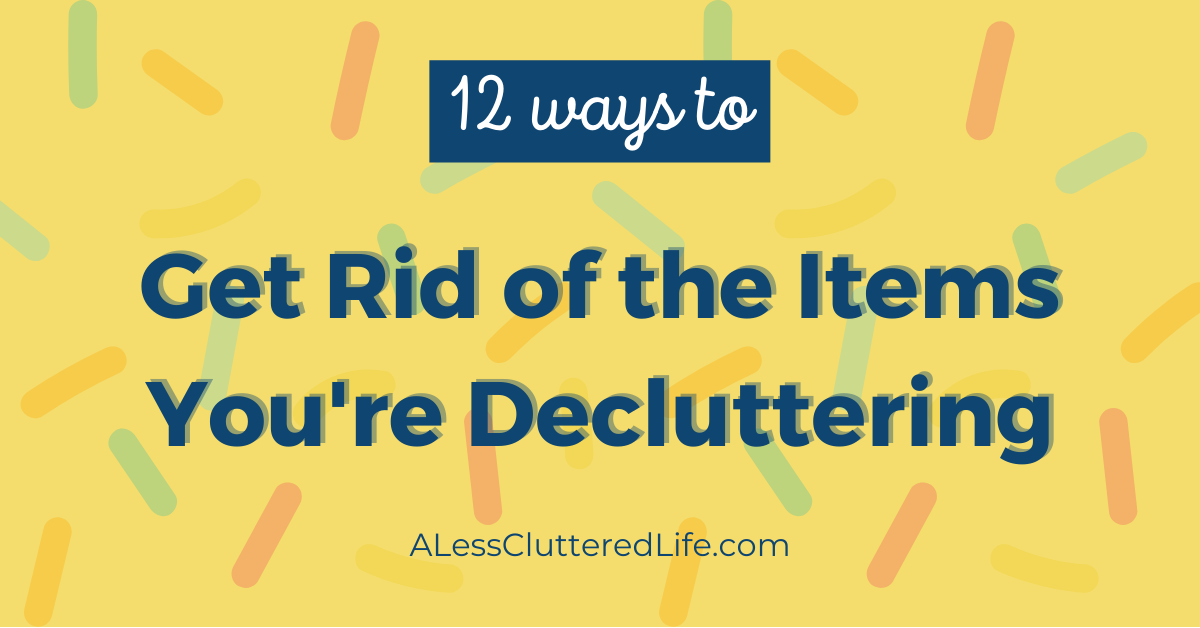
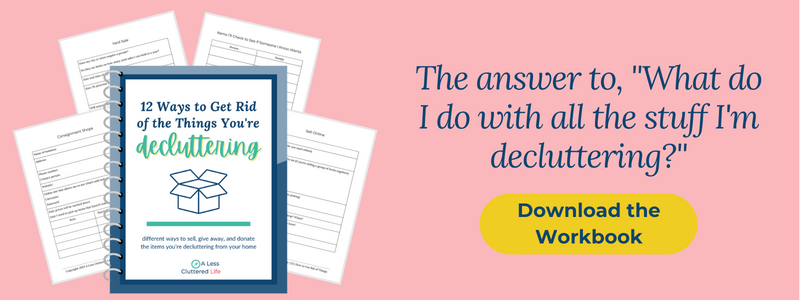
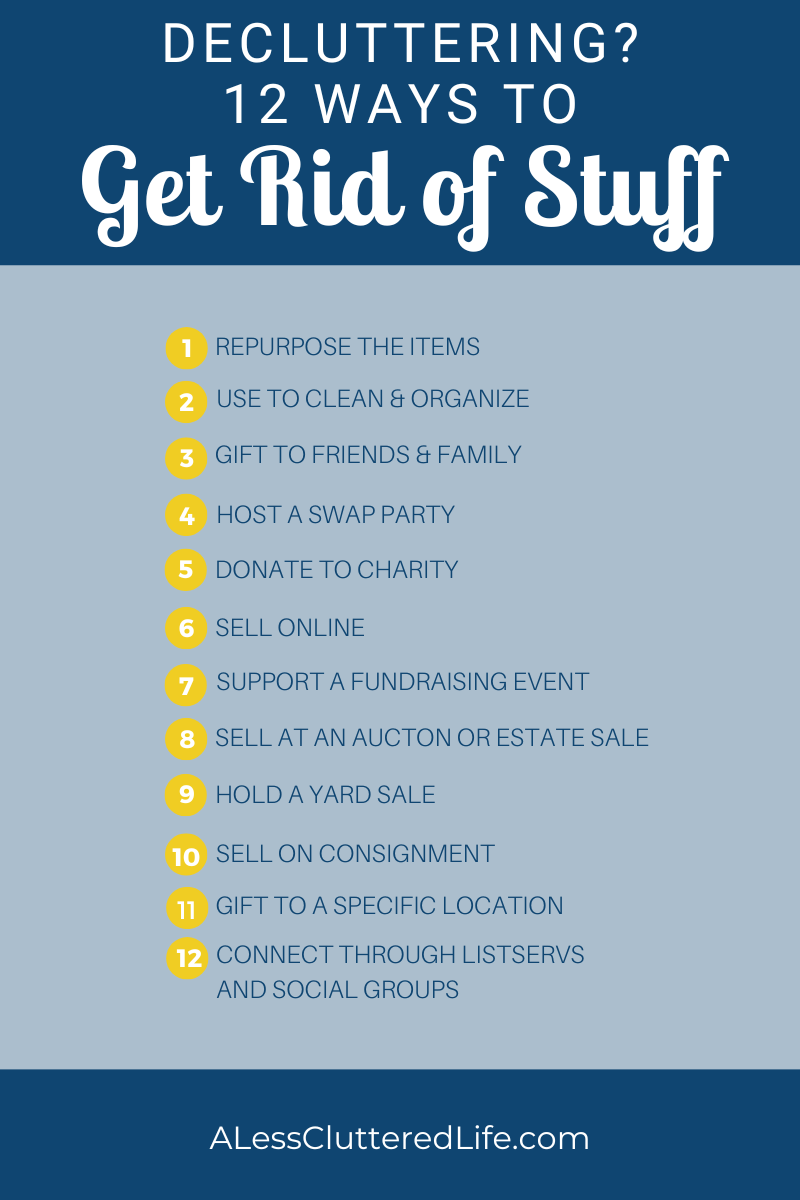
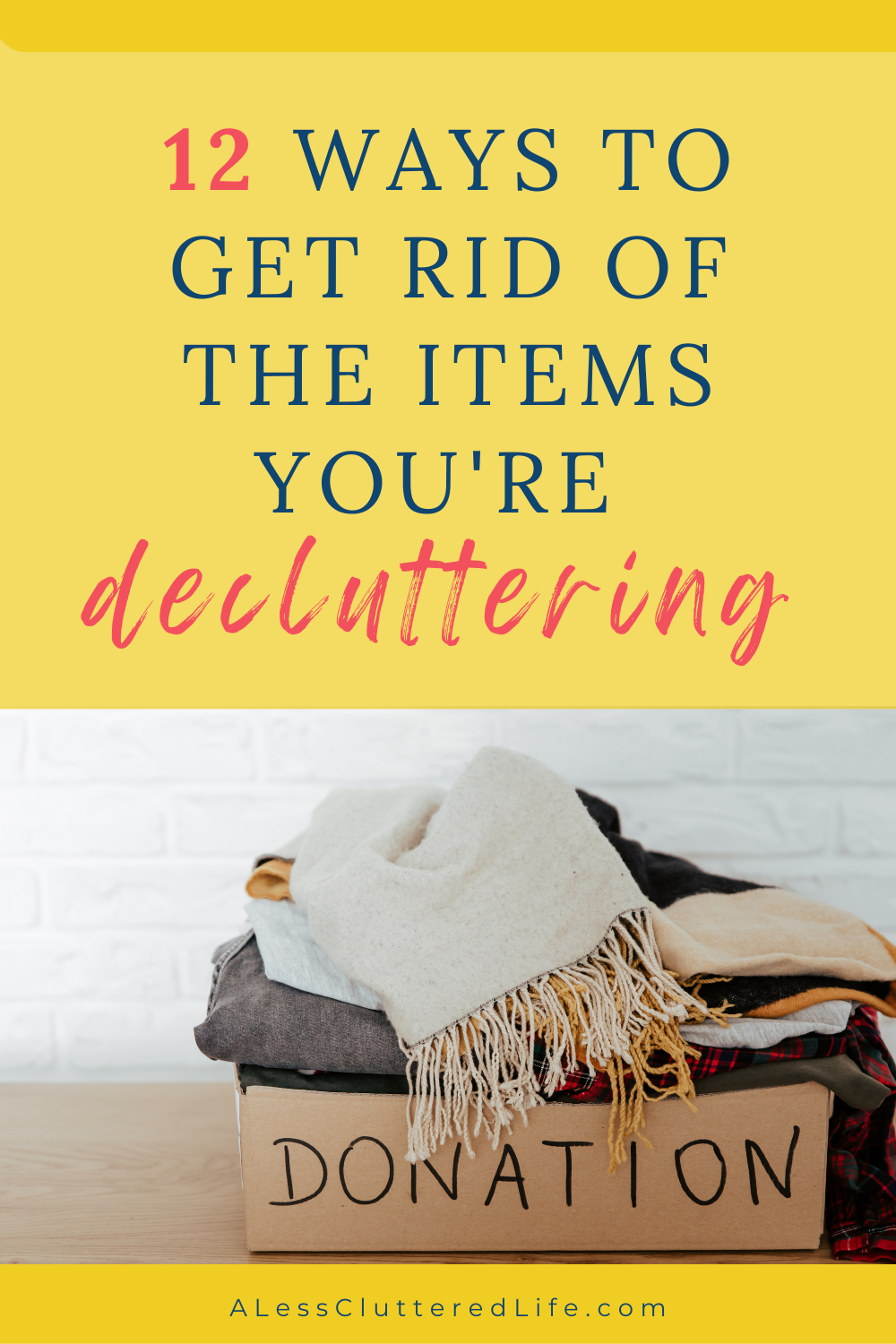
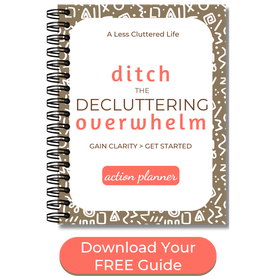

 RSS Feed
RSS Feed

